Assignment 3 Report
Report on the application of virtual reality in treating dark phobia
Introduction/Overview
This application is a customized virtual reality (VR) therapeutic tool for patients with fear of darkness, using exposure therapy to help users gradually adapt to darkness in a safe and controlled environment. The aim is to distract users’ attention by engaging them in specific memory tasks, helping them unconsciously overcome their fear of darkness.
Application description
1. Application functions
This application creates a simulated environment using VR technology, where users are required to complete tasks that involve remembering and restoring the positions of differently colored blocks. Initially, users observe and memorize block positions in a well-lit setting. Then the environment darkens for a period, and the blocks’ positions are scrambled, challenging users to remember the blocks’ positions in the darkness and restore them when the lights return.
2. Importance of application
The design concept of this app is based on exposure therapy, a widely recognized and used psychotherapy method that reduces or eliminates fearful reactions by having patients face and experience the things they fear. According to research by Böhnlein et al. (2020), Exposure Therapy (ET) is the first-line treatment of Specific Phobia (SP). By introducing memory tasks, this application helps users shift their attention from darkness to task completion. Thus gradually adapting to the darkness in the process of completing the task.
3. The importance of interface technology
VR technology provides an immersive and realistic environment for this application, allowing users to receive treatment in a risk-free virtual environment. This immersive experience allows users to focus more on tasks, while also making it easier to adapt to and accept exposure therapy. Research by Botella et al. (2017) shows that VR is a useful tool to improve exposure therapy and it can be a good option to analyze the processes and mechanisms involved in exposure therapy and the ways this strategy can be enhanced. In the coming years, there will be a significant expansion of VR in routine practice in clinical contexts.
Interactive Design
1. Why interaction is needed
Interaction is a core component of this application, enabling users to actually operate and complete tasks in a virtual environment, allowing for a shift in attention and gradual adaptation to darkness. This phenomenon is often called "inattentional blindness" and refers to when an individual focuses on a task or object and ignores other surrounding information. The experiment from Simons and Chabris (1999) intuitively proves the existence of this phenomenon. This application uses this theory to treat dark phobia by giving users some small tasks that need to be completed interactively to divert the user's attention and make them ignore changes in the environment. In the final version, there will be a variety of more attractive tasks or more challenging tasks to enable users to be more immersed in those tasks, making it easier to ignore changes in the environment, and thus more easily overcome the fear of the dark.
2. Storyboard
Step 1: Users wear a VR headset and enter the initial bright virtual environment, where a menu allows them to choose the difficulty level.
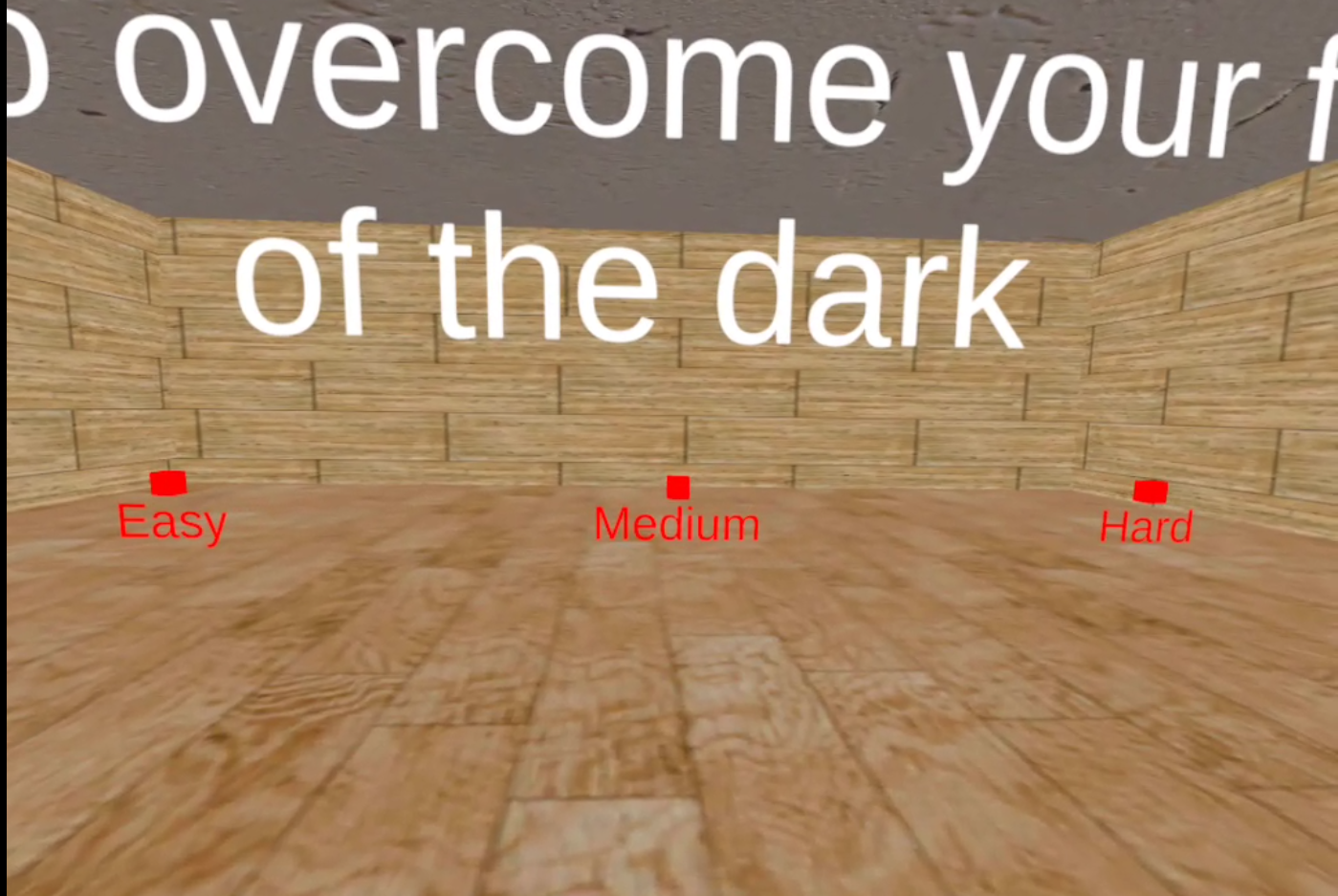
Step 2: Users select an appropriate difficulty level by clicking the corresponding button.
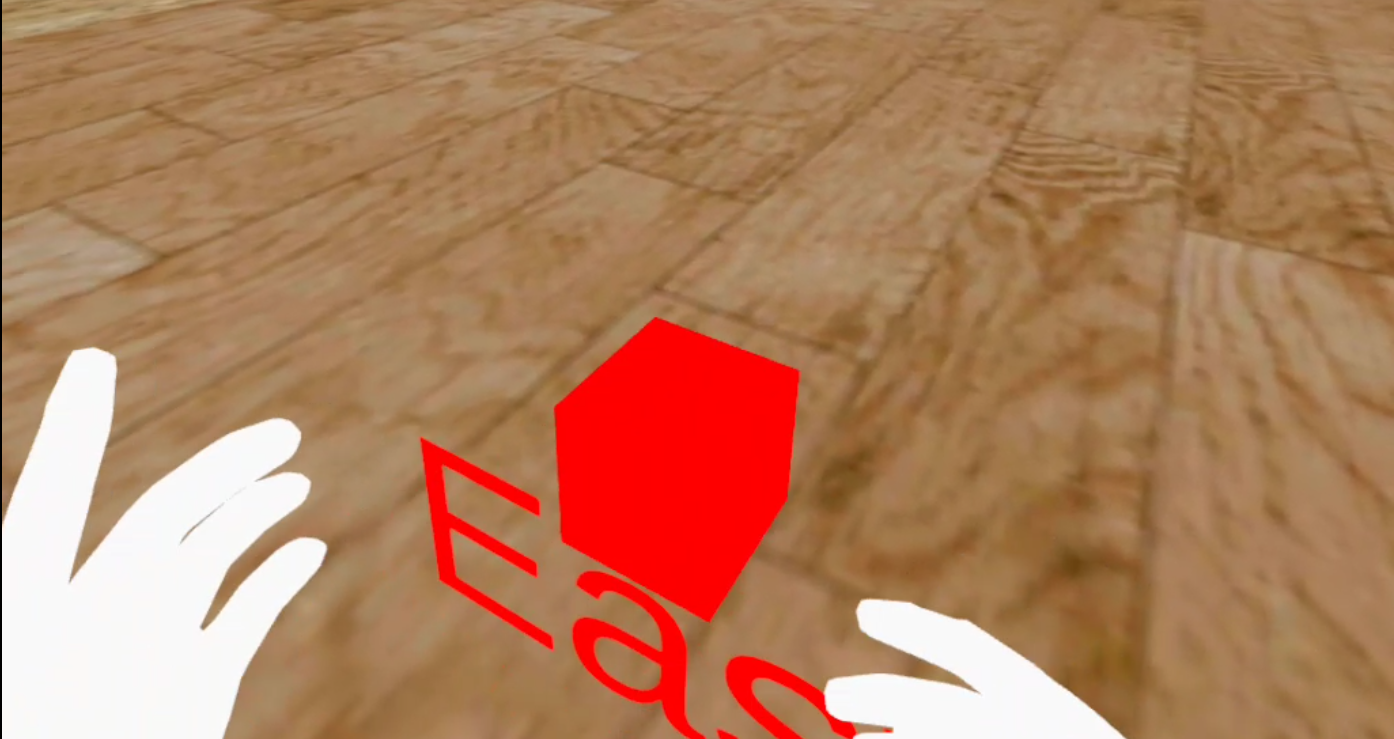
Step 3: Users switch to the selected difficulty scene and start memorizing the positions of different color blocks.
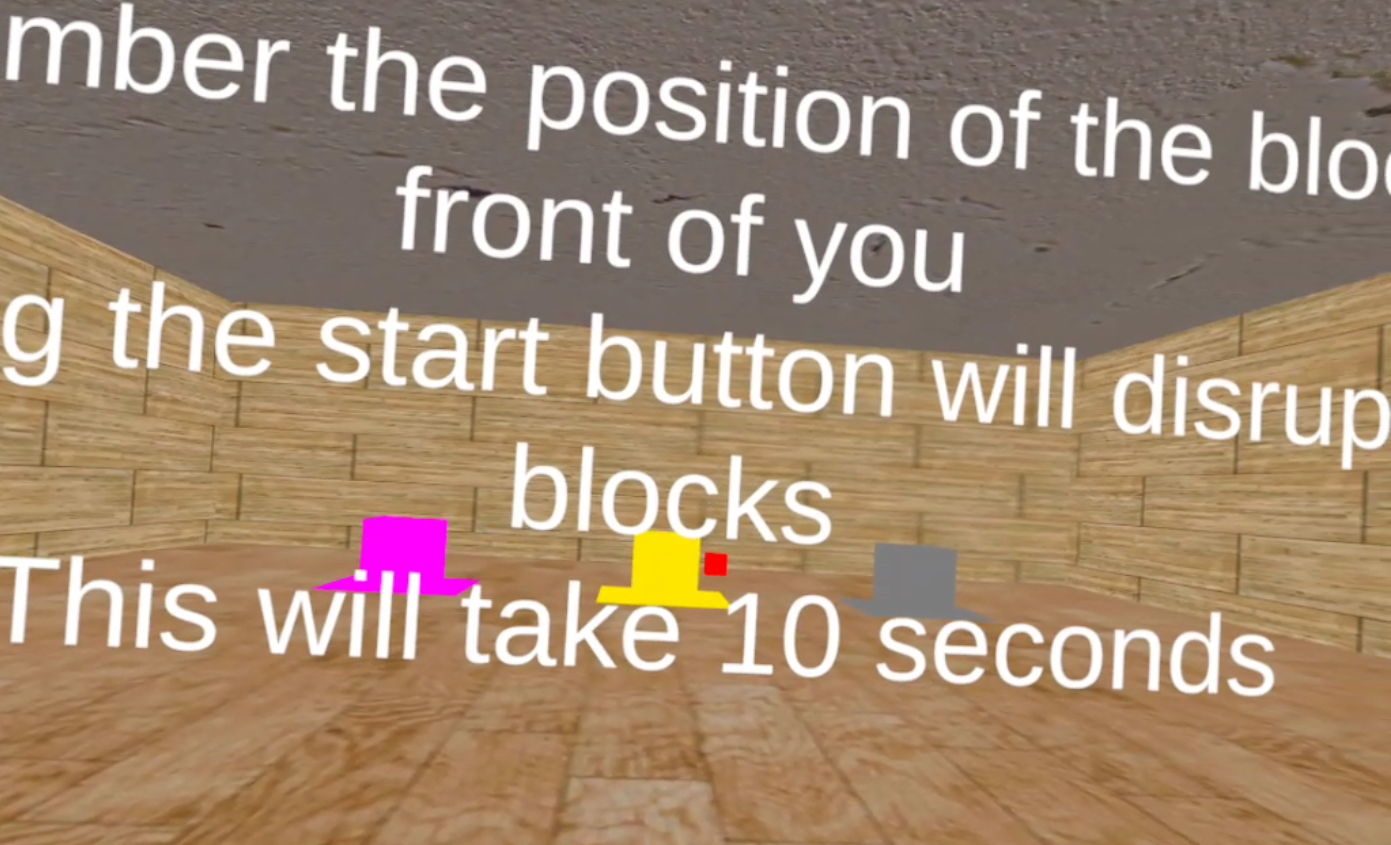
Step 4: Upon pressing a button, the environment gradually darkens, and the blocks' positions are scrambled.

Step 5: After a period of darkness, the environment brightens, and users use controllers to restore the blocks to their original positions.

Step 6: After completing the task, press the button and it will go to a new scene to give the user positive feedback.
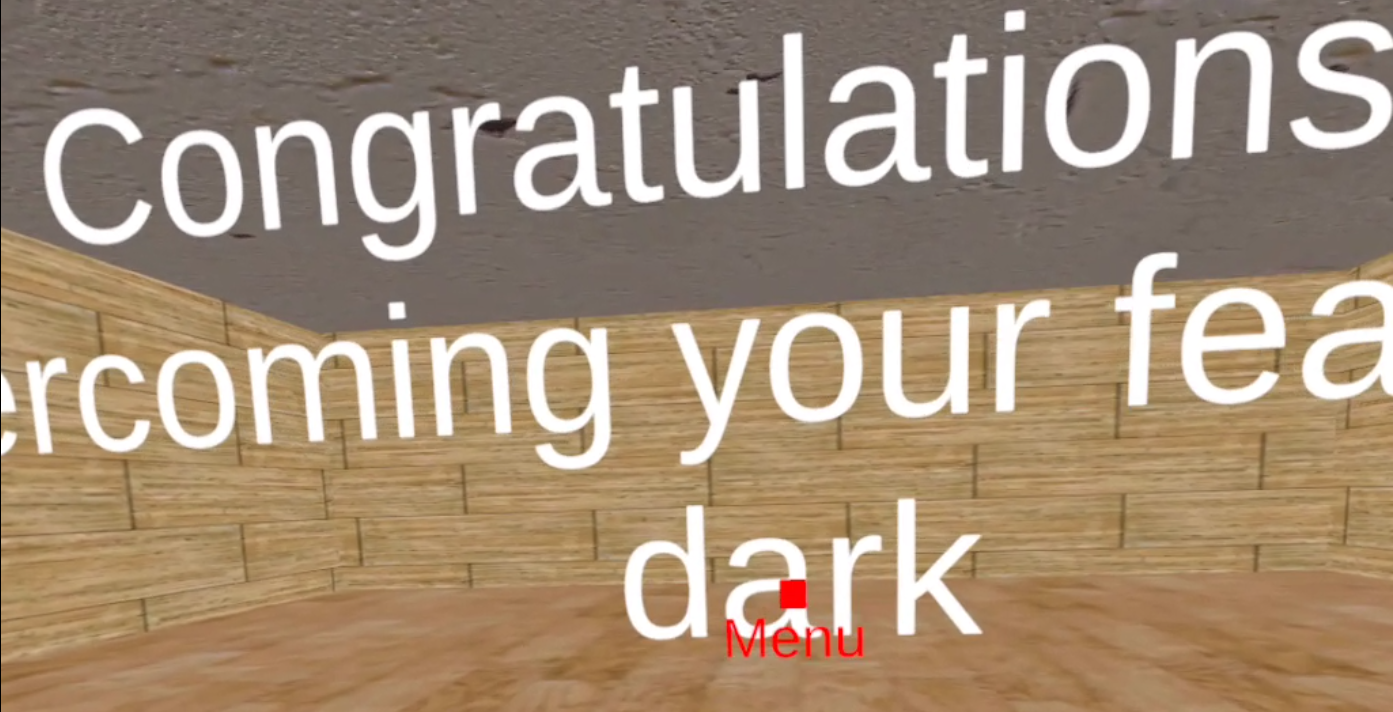
Through these interactive processes, users not only engage in fun and challenging memory tasks but are also gradually exposed to a dark environment.
Technology development
1. Specific interface technology
This application is developed using Oculus Quest VR equipment.
2. How to interact
The user moves and turns through the joystick of the VR device handle.
Use the triggers on the controller to interact with buttons within the scene.
Use the trigger on the controller to hold down to grab blocks and release to drop blocks.
3D model description
1. Blocks of different colors
Description: This is a three-dimensional block of various colors.
Purpose: The cube serves as an object for memory tasks, helps the user to divert attention, and also serves as an interactive element during therapy.
Thumbnail:
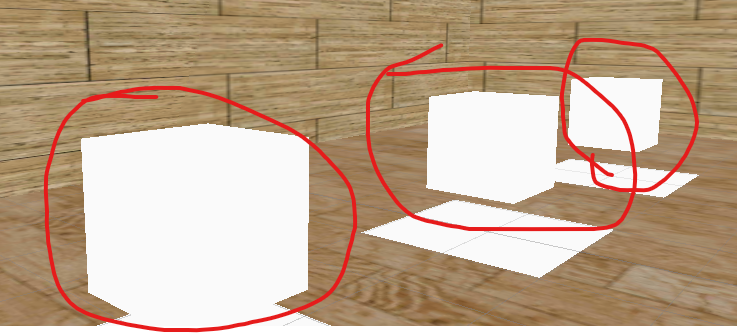
Will be given a random color.
2. Plane
Description: This is a plane will show different color in different situations.
Purpose: before user press the button, these planes will show the same color as the cube. After user press the button, the planes will show green when the cube at the right position and show red when it’s not.
Thumbnail:
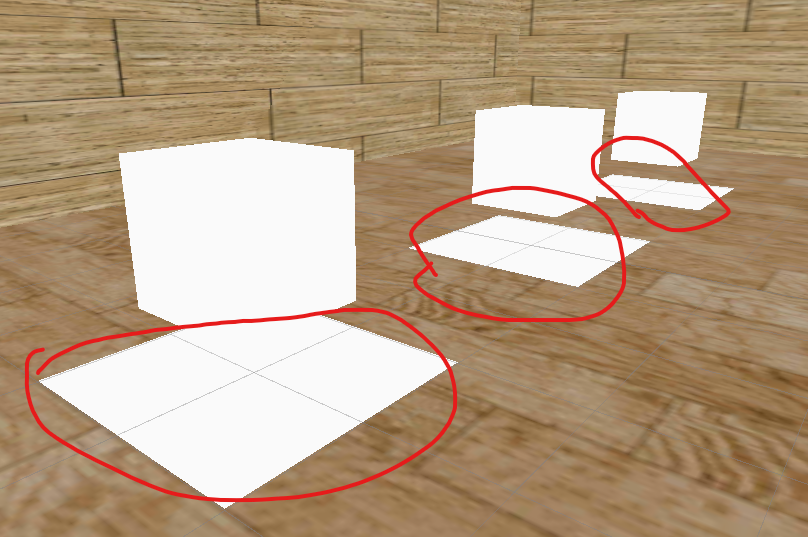
Summarize
Through carefully designed interactions and task difficulty grading, this app provides a safe, progressive, and effective treatment tool for users suffering from phobia of the dark. Utilizing modern VR technology, this application ensures that users enjoy a challenging and engaging interactive experience while receiving treatment.
Reference:
The materials of the ground, walls and ceiling in the scene use the materials listed in the Unity Asset store by A dog's life software (2016) and Simons and Chabris (1999). The specific website link is in the reference list.
Reference list
A dog's life software 2016, 18 High Resolution Wall Textures | 2D Brick | Unity Asset Store, assetstore.unity.com, viewed 24 September 2023, <https: assetstore.unity.com="" packages="" 2d="" textures-materials="" brick="" 18-high-resolution-wall-textures-12567="">.</https:>
Böhnlein, J, Altegoer, L, Muck , NK, Roesmann, K, Redlich, R, Dannlowski , U & Leehr, EJ 2020, ‘Factors influencing the success of exposure therapy for specific phobia: A systematic review’, Neuroscience & Biobehavioral Reviews, vol. 108, pp. 796–820, viewed 2 November 2020, <https: www.sciencedirect.com="" science="" article="" pii="" s014976341930404x="">.</https:>
Botella, C, Fernández-Álvarez, J, Guillén, V, García-Palacios, A & Baños, R 2017, ‘Recent Progress in Virtual Reality Exposure Therapy for Phobias: A Systematic Review’, Current Psychiatry Reports, vol. 19, no. 7.
Simons, DJ & Chabris, CF 1999, ‘Gorillas in Our Midst: Sustained Inattentional Blindness for Dynamic Events’, Perception, vol. 28, no. 9, pp. 1059–1074.
Yughues 2015, Yughues Free Wooden Floor Materials | 2D Wood | Unity Asset Store, assetstore.unity.com, viewed 24 September 2023, <https: assetstore.unity.com="" packages="" 2d="" textures-materials="" wood="" yughues-free-wooden-floor-materials-13213="">.</https:>